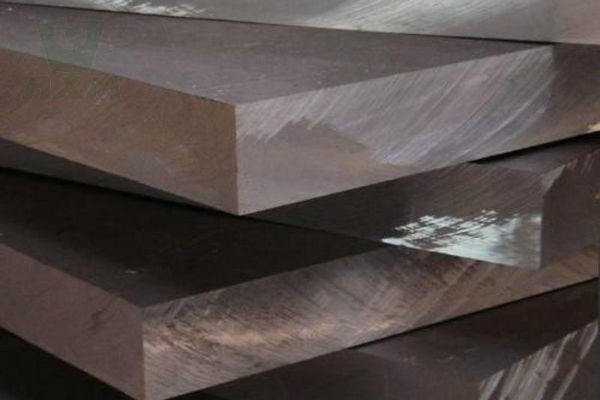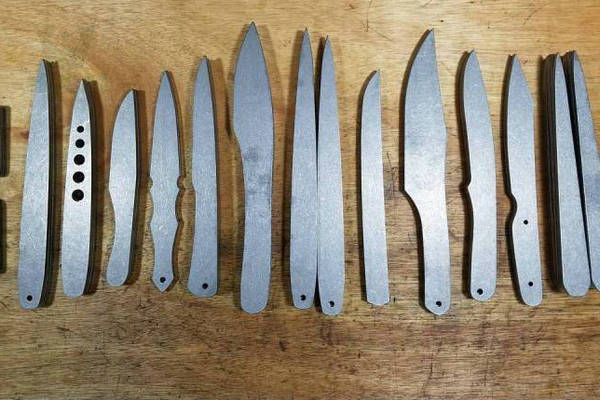I. Terms Related to the Mechanical Properties of Steel
1. Yield Point (σs)
When the stress of steel or specimen exceeds the elastic limit during stretching, even if the stress no longer increases, the steel or specimen continues to undergo obvious plastic deformation. This phenomenon is called yield, and the minimum stress value when the yield phenomenon occurs is the yield point.
Let Ps be the external force at the yield point s, and Fo be the cross-sectional area of the specimen. Then the yield point σs = Ps/Fo (MPa), MPa is called megapascal equal to N (Newton)/mm2, (MPa=106Pa, Pa: Pascal=N/m2).
2. Yield Strength (σ0.2)
The yield point of some metal materials is extremely unclear and difficult to measure. Therefore, to measure the yield characteristics of the material, the stress when the permanent residual plastic deformation is equal to a certain value (generally 0.2% of the original length) is called conditional yield strength or simply yield strength σ0.2.
3. Tensile Strength (σb)
The maximum stress value reached by the material from the beginning to the fracture during the stretching process. It indicates the ability of steel to resist fracture. Corresponding to the tensile strength are compressive strength, bending strength, etc. (Tianyang Steel Pipe)
Let Pb be the maximum tensile force reached before the material is broken, and Fo is the cross-sectional area of the specimen, then the tensile strength σb= Pb/Fo (MPa).
4. Elongation (δs)
After the material is broken, the percentage of its plastic elongation length to the original specimen length is called elongation or elongation.
5. Yield Ratio (σs/σb)
The ratio of the yield point (yield strength) of steel to the tensile strength is called the yield ratio. The larger the yield ratio, the higher the reliability of the structural parts. Generally, the yield ratio of carbon steel is 0.6-0.65, that of low-alloy structural steel is 0.65-0.75, and that of alloy structural steel is 0.84-0.86.
6. Hardness
Hardness indicates the ability of a material to resist a hard object from pressing into its surface. It is one of the important performance indicators of metal materials. Generally, the higher the hardness, the better the wear resistance. Commonly used hardness indicators include Brinell hardness, Rockwell hardness, and Vickers hardness.
⑴ Brinell hardness (HB)
Press a hardened steel ball of a certain size (usually 10mm in diameter) into the surface of the material with a certain load (usually 3000kg) and keep it for some time. After unloading, the ratio of the load to its indentation area is the Brinell hardness value (HB), in kilogram-force/mm2 (N/mm2).
⑵ Rockwell hardness (HR)
When HB>450 or the sample is too small, the Brinell hardness test cannot be used and the Rockwell hardness measurement is used instead. It uses a diamond cone with a vertex angle of 120° or a steel ball with a diameter of 1.59 or 3.18mm to press into the surface of the material under test under a certain load, and the hardness of the material is calculated from the depth of the indentation. According to the hardness of the test material, it is expressed in three different scales:
HRA: It is the hardness obtained by using a 60kg load and a diamond cone indenter, which is used for materials with extremely high hardness (such as cemented carbide, etc.).
HRB: It is the hardness obtained by using a 100kg load and a hardened steel ball with a diameter of 1.58mm, which is used for materials with lower hardness (such as annealed steel, cast iron, etc.).
HRC: It is the hardness obtained by using a 150kg load and a diamond cone indenter, which is used for materials with very high hardness (such as hardened steel, etc.). (021-57590225)
⑶ Vickers hardness (HV)
Press the material surface with a load of less than 120kg and a diamond square cone indenter with a vertex angle of 136°, and divide the surface area of the material indentation by the load value to obtain the Vickers hardness value (HV).
II. Terms Related to Heat Treatment of Steel
1. Annealing of Steel
Heating steel to a certain temperature keeping it warm for some time, and then slowly cooling it, is called annealing. Annealing of steel is a heat treatment method in which steel is heated to a temperature where phase change or partial phase change occurs, and then slowly cooled after heat preservation. The purpose of annealing is to eliminate structural defects, improve the structure to make the composition uniform and refine the grains, improve the mechanical properties of steel, and reduce residual stress; at the same time, it can reduce hardness, improve plasticity and toughness, and improve cutting performance. Therefore, annealing is not only to eliminate and improve the structural defects and internal stress left over from the previous process but also to prepare for subsequent processes. Therefore, annealing belongs to the heat treatment of semi-finished products, also known as pre-heat treatment.
2. Normalizing of Steel
Normalizing is a heat treatment method in which steel is heated to above the critical temperature, so that the steel is completely transformed into uniform austenite, and then naturally cooled in the air. It can eliminate the network cementite of hypereutectoid steel. For hypoeutectoid steel, normalizing can refine the lattice and improve the comprehensive mechanical properties. It is more economical to use normalizing instead of annealing process for parts with low requirements.
3. Quenching of Steel
Quenching is a heat treatment method in which steel is heated to above the critical temperature, kept warm for some time, and then quickly placed in a quenching agent to reduce its temperature suddenly, and rapidly cooled at a rate greater than the critical cooling rate to obtain an unbalanced structure dominated by martensite. Quenching can increase the strength and hardness of steel, but reduce its plasticity. Commonly used quenching agents in quenching include: water, oil, alkaline water, and salt solutions.
4. Tempering of Steel
Reheating the quenched steel to a certain temperature and then cooling it in a certain way is called tempering. Its purpose is to eliminate the internal stress generated by quenching, reduce hardness and brittleness, and obtain the expected mechanical properties. Tempering is divided into three categories: high-temperature tempering, medium-temperature tempering, and low-temperature tempering. Tempering is often used in conjunction with quenching and normalizing.
⑴Quenching and tempering treatment:
The heat treatment method of high-temperature tempering after quenching is called quenching and tempering treatment. High-temperature tempering refers to tempering between 500-650℃. Tempering can adjust the performance and material of steel to a great extent. Its strength, plasticity, and toughness are good, and it has good comprehensive mechanical properties. (www.steeltube-cn.com)
⑵Aging treatment:
To eliminate the changes in size and shape of precision measuring tools, molds, and parts during long-term use, the workpiece is often reheated to 100-150℃ before finishing after low-temperature tempering (low-temperature tempering temperature 150-250℃) and kept for 5-20 hours. This treatment to stabilize the quality of precision parts is called aging. It is particularly important to perform aging treatment on steel components under low temperatures or dynamic load conditions to eliminate residual stress and stabilize the steel structure and size.
5. Surface Heat Treatment of Steel
⑴Surface quenching:
It is to quickly heat the surface of the steel part to above the critical temperature, but quickly cool it before the heat can be transferred to the core, so that the surface layer can be quenched in the martensite structure, and the core does not undergo phase change, which achieves the purpose of surface hardening without changing the core. Applicable to medium carbon steel.
⑵Chemical heat treatment:
It refers to the process of infiltrating the atoms of chemical elements into the surface layer of the workpiece using the ability of atomic diffusion at high temperatures, to change the chemical composition and structure of the surface layer of the workpiece, to achieve a heat treatment process that makes the surface layer of the steel have specific organizational and performance requirements. According to the type of infiltrated elements, chemical heat treatment can be divided into four types: carburizing, nitriding, cyaniding, and metal infiltration.
Carburizing: Carburizing refers to the process of infiltrating carbon atoms into the surface layer of steel. It also makes the low-carbon steel workpiece have a high-carbon steel surface layer, and then after quenching and low-temperature tempering, the surface layer of the workpiece has high hardness and wear resistance, while the center of the workpiece still maintains the toughness and plasticity of low-carbon steel.
Nitriding: also known as nitriding, is the process of infiltrating nitrogen atoms into the surface layer of steel. Its purpose is to improve the hardness and wear resistance of the surface layer as well as fatigue strength and corrosion resistance. At present, gas nitriding is mostly used in production.
Cyaniding: also known as carbonitriding, refers to the process of infiltrating carbon atoms and nitrogen atoms into steel at the same time. It makes the steel surface have the characteristics of carburizing and nitriding.
Metallization: refers to the process of infiltrating the surface layer of steel with metal atoms. It alloys the surface layer of steel so that the surface of the workpiece has the characteristics of certain alloy steels and special steels, such as heat resistance, wear resistance, oxidation resistance, corrosion resistance, etc. Commonly used in production are aluminizing, chromizing, boronizing, siliconizing, etc.







